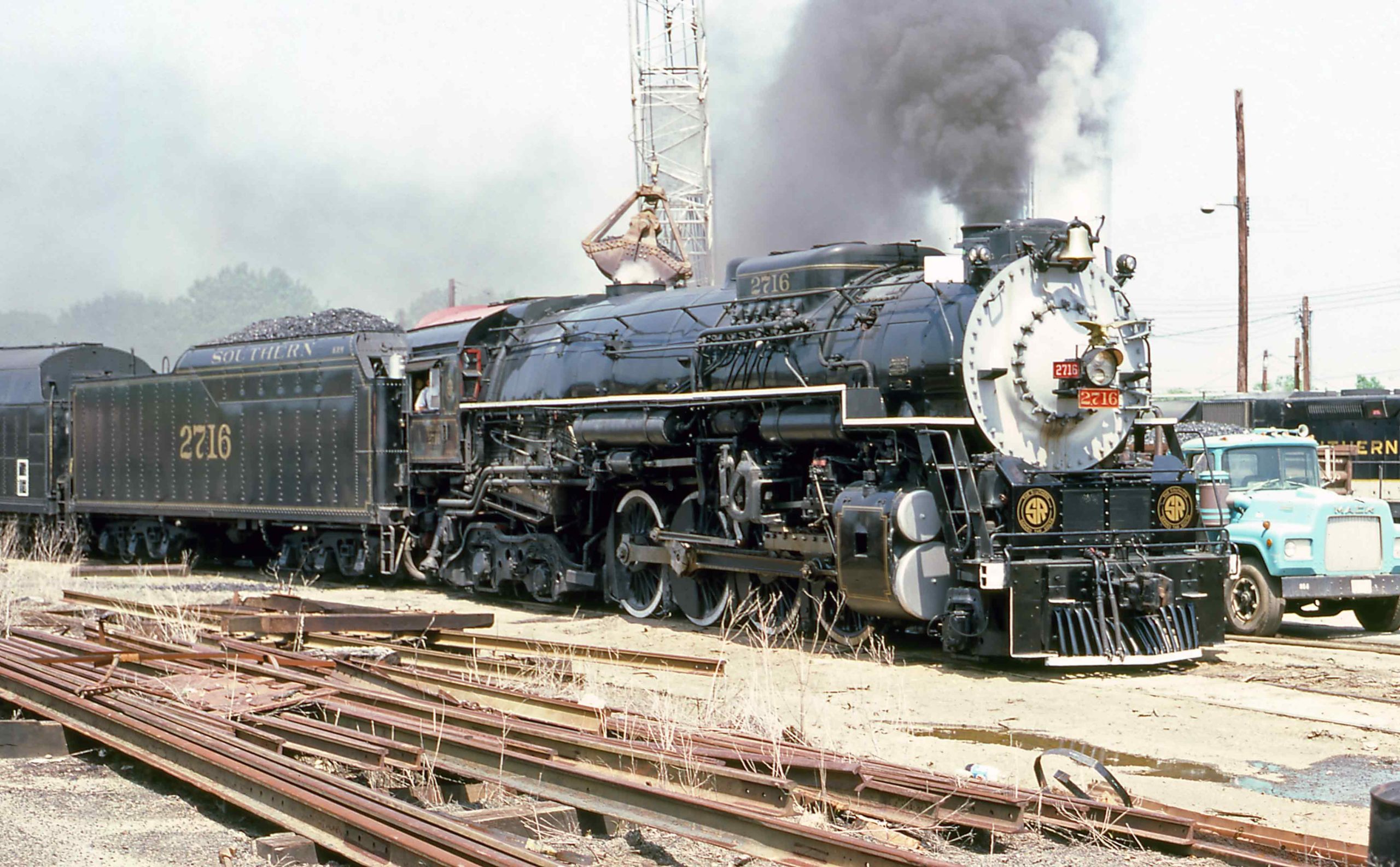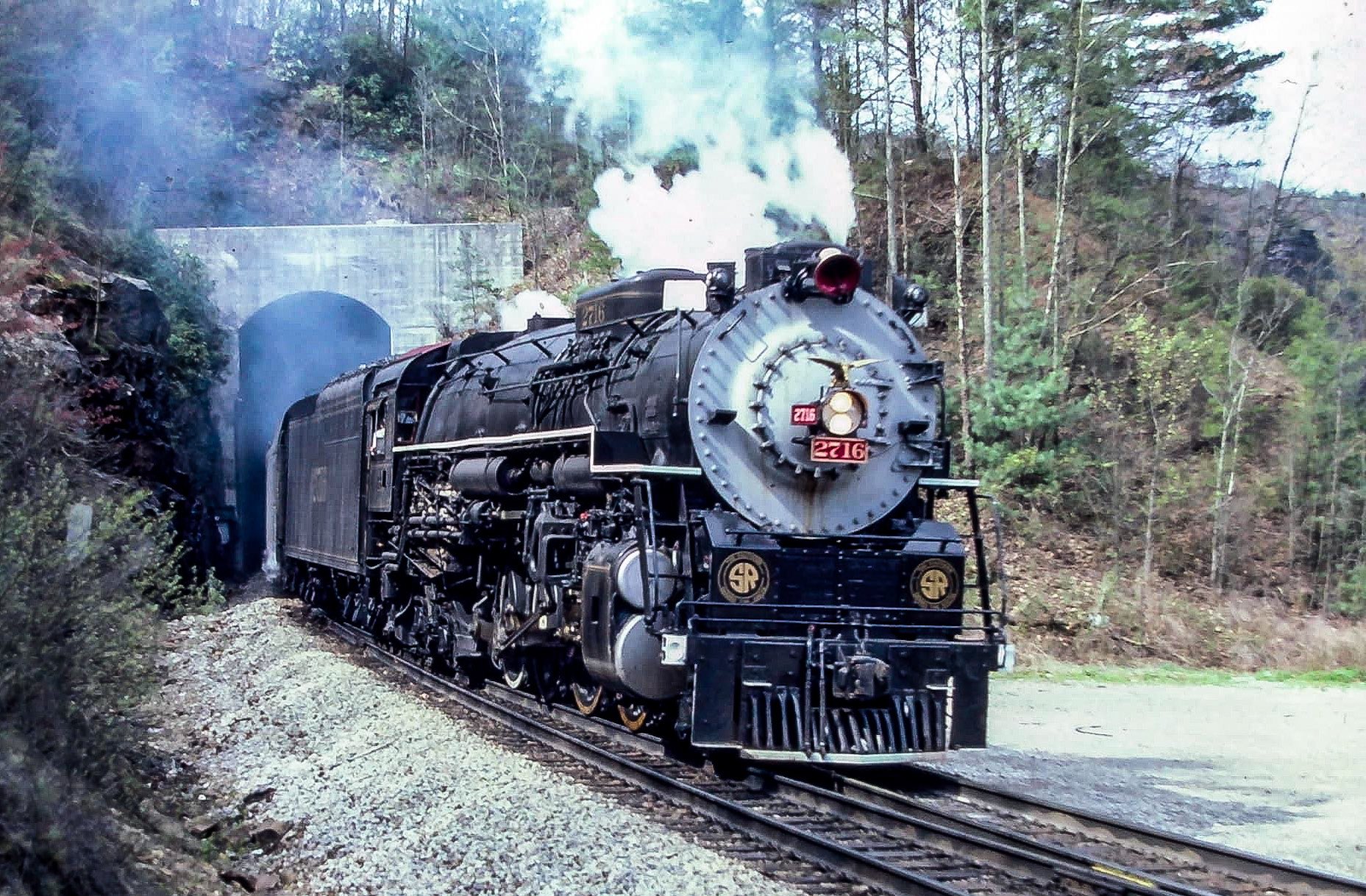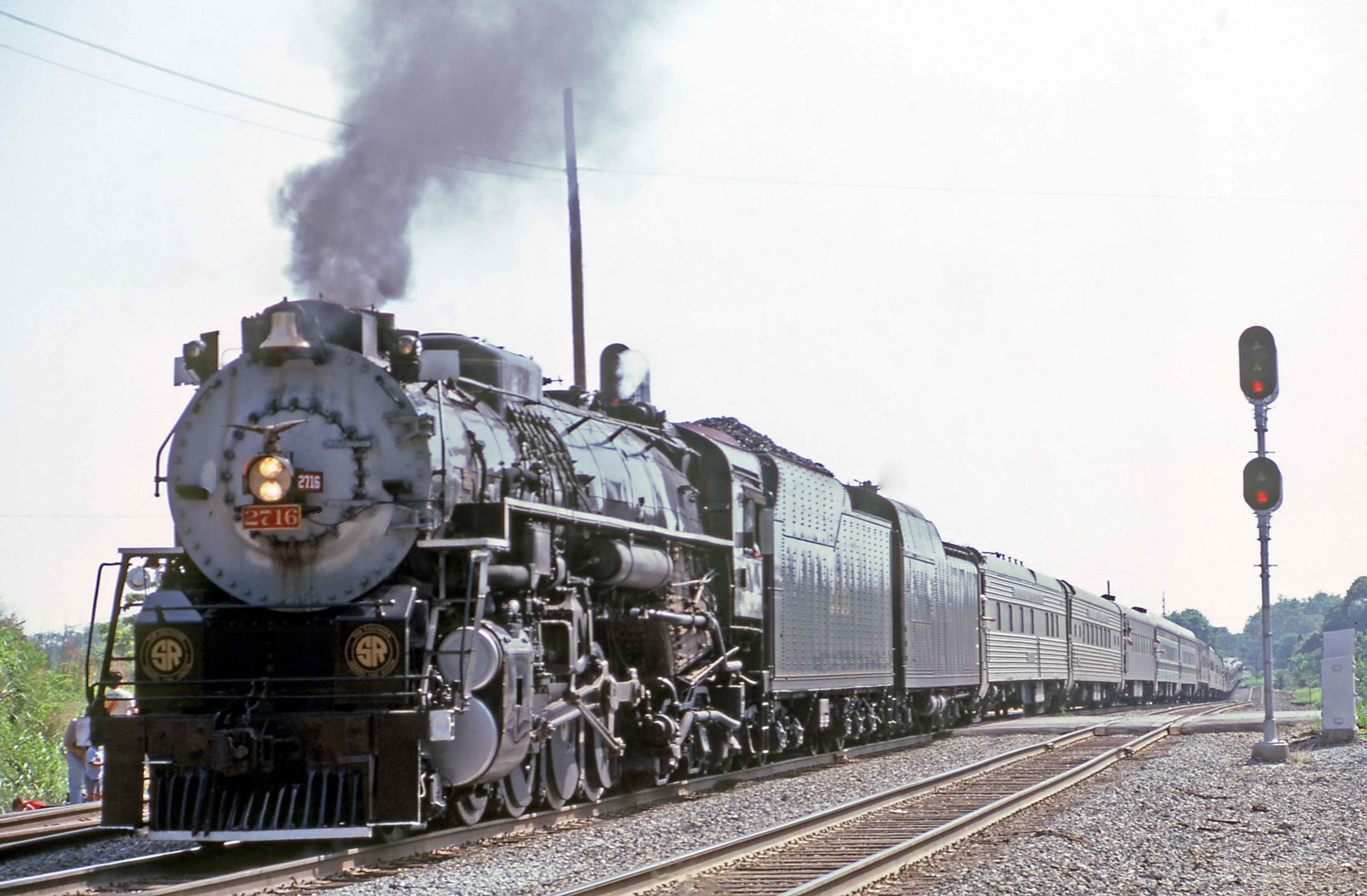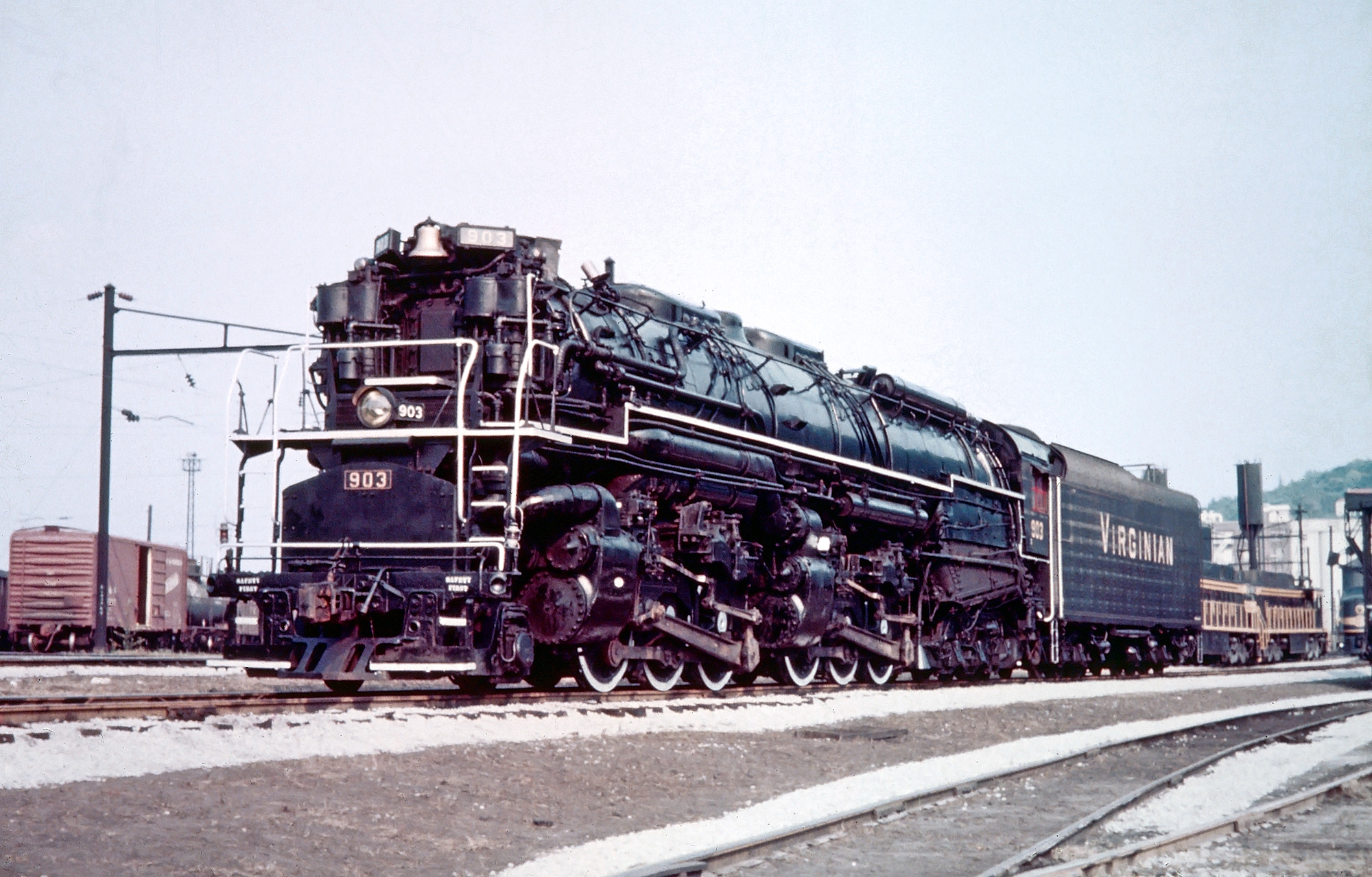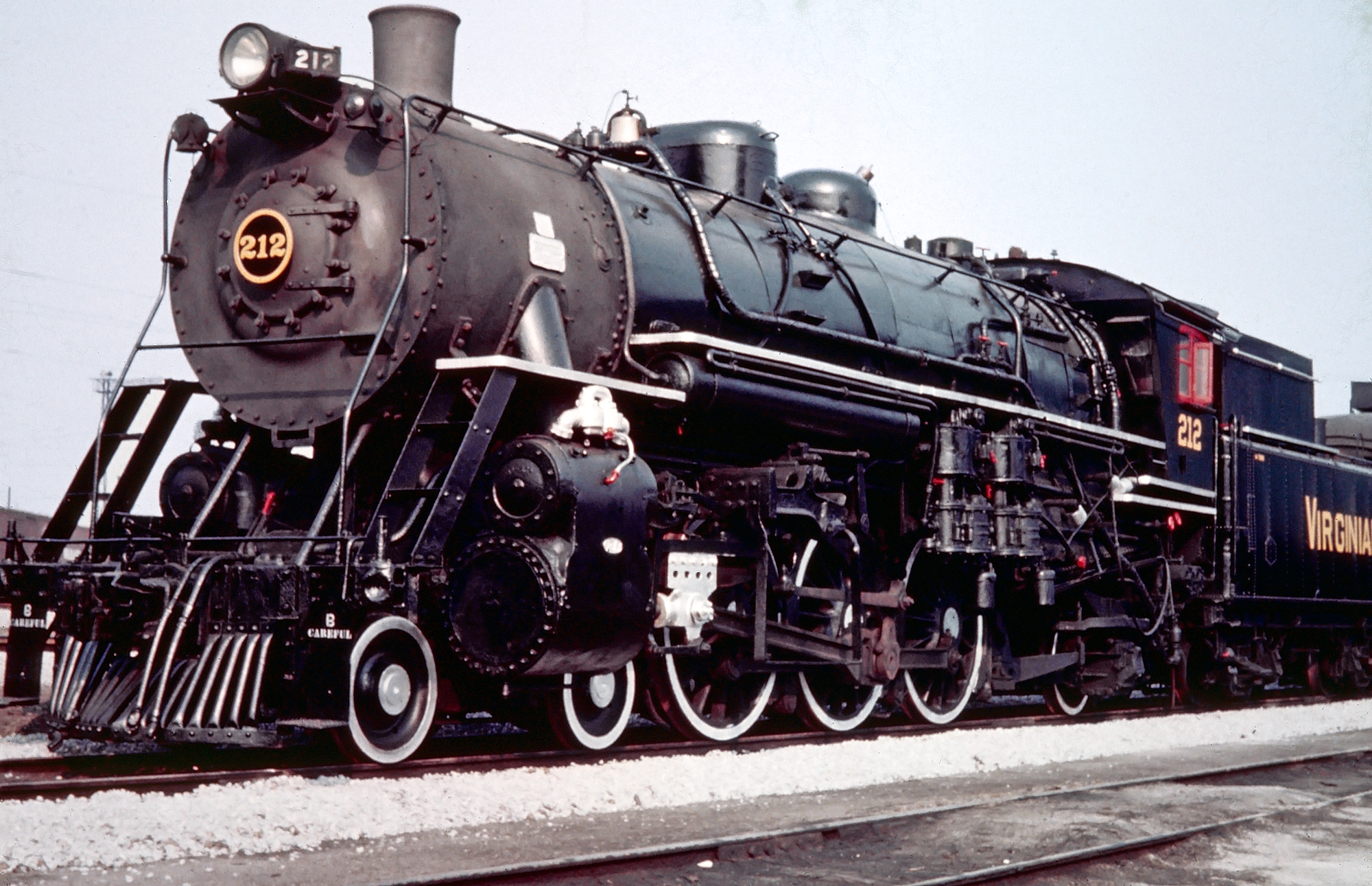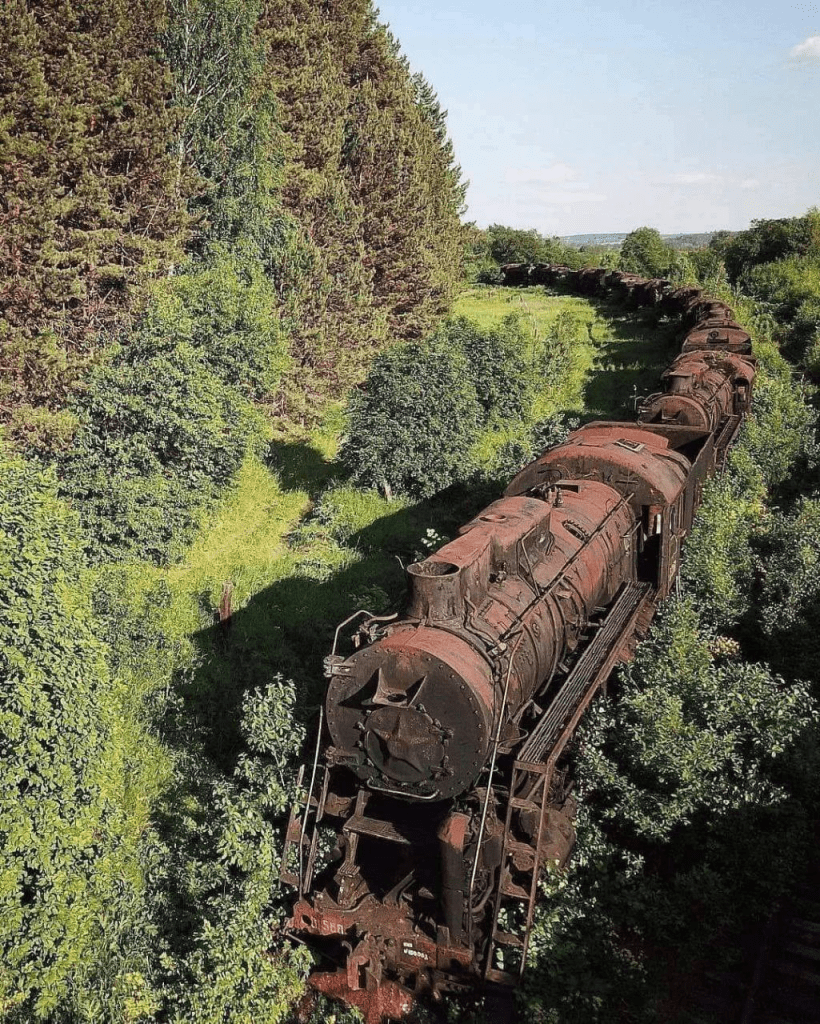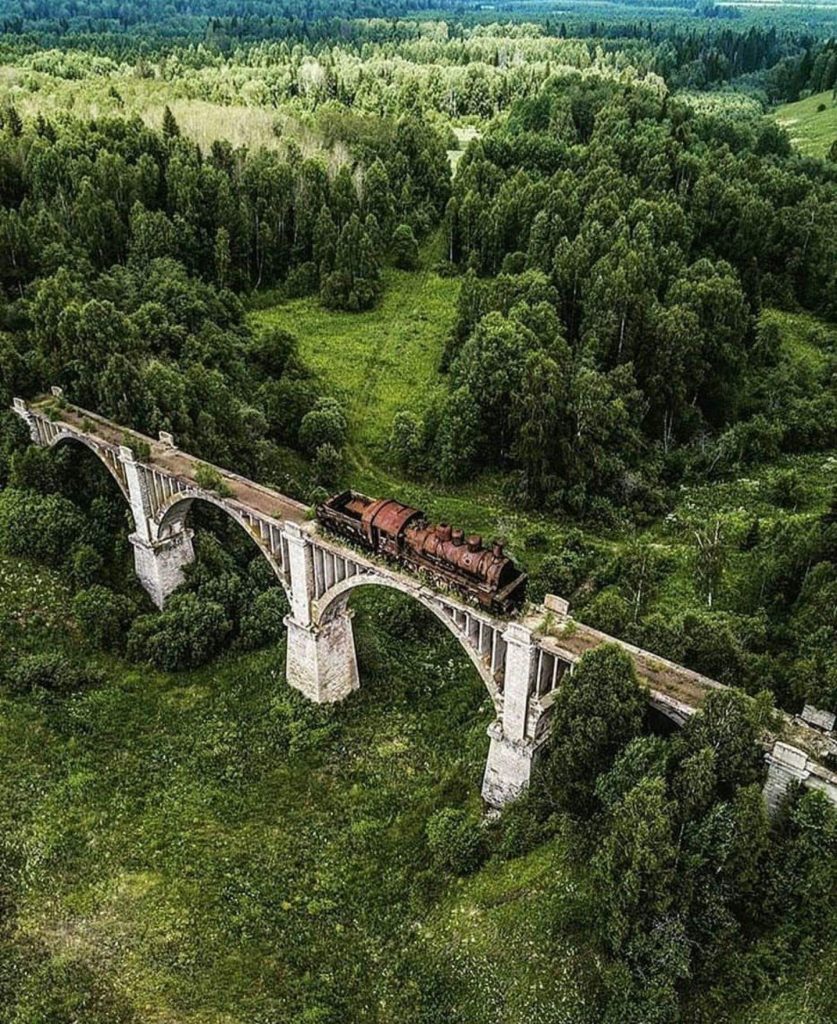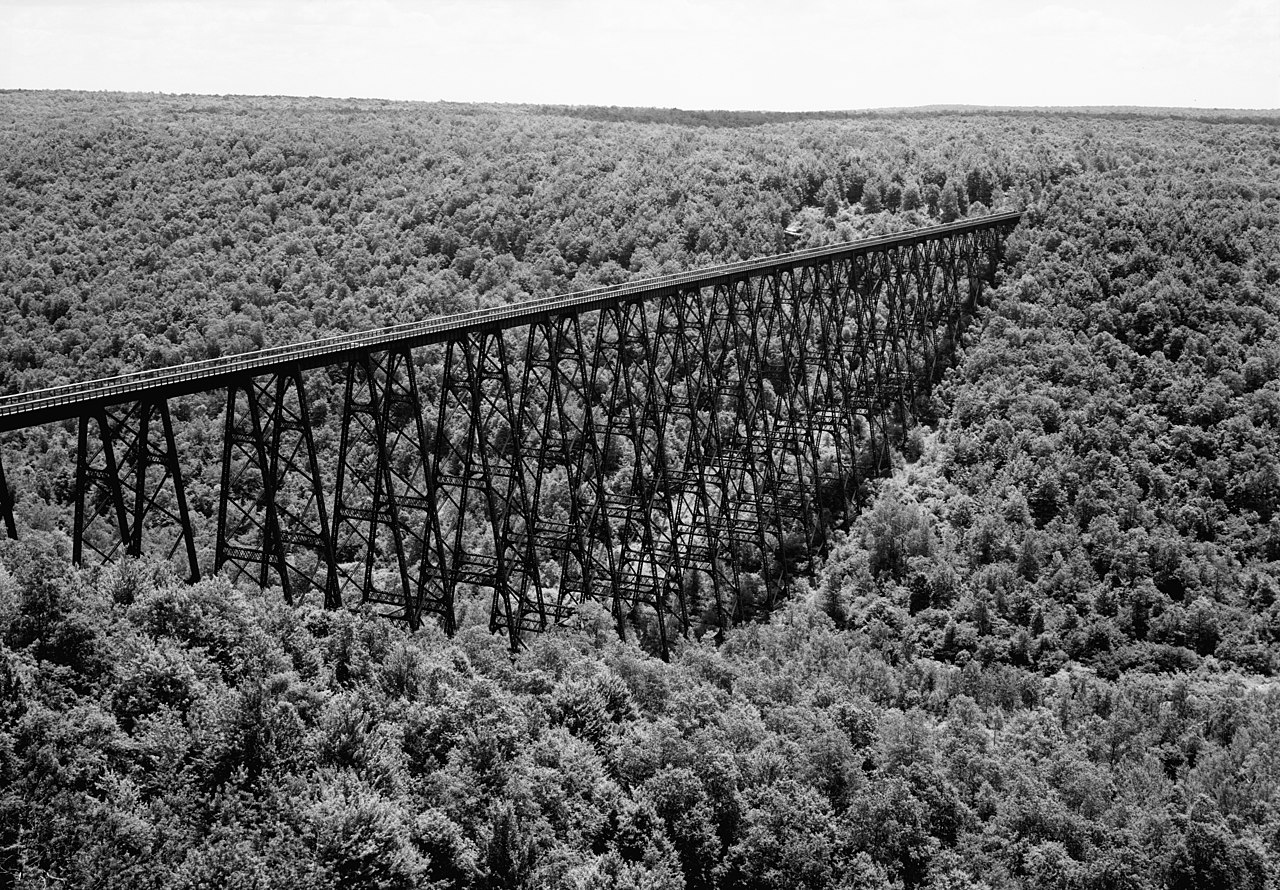C&O #2716 ran exactly four trips over the TP&W in the summer of 1996. A lot of people, including the FWRHS hoped that those would be the start of something more, but those ended up being it for the #2716. That C&O Kanawha has probably been the biggest hard-luck case when it comes to mainline excursion steam locomotives. It had been moved to Clinchfield's shops in 1976 to be restored for a corporate excursion program at the behest of president Tom Moore, only for the program, and the Clinchfield's independent identity within Seaboard Systems/Family Lines, to come to an abrupt end when Moore was fired over embezzlement charges.
The partially-disassembled 2-8-4 was sent back to Kentucky Railway Museum, only to be leased by Southern Railway in 1980 so that it could be restored and run in their corporate steam program, which needed faster and more powerful steam locomotives than what they had available. The #2716 was restored at the Southern's steam shops in Irondale, Alabama, although it's restoration was delayed by Southern #4501 cracking the front flue sheet, and entered service disguised as a fictional Southern 2-8-4 (Southern never owned any Berkshires, or even any engines with two-axle trailing trucks) mid-October of 1981, later than hoped. It ran a handful of excursions that year, then came back out in the spring of '82 for a few more, only for the firebox to start to develop some really nasty cracks. Southern ended up leasing NKP #765 to fill in for the rest of the season, and even paid for some fairly expensive repairs (refurbishment of both trailing truck axles) to ensure #765 could complete the season without major issues. With the NS merger impending, and Norfolk & Western just having gotten N&W #611 up and running, the decision was made not to repair the #2716. It was moved back to Irondale and stored there until 1994, when NS shut down the steam program and began selling off everything.
Fort Wayne Railroad Historical Society had taken the #765 out of service the year before to perform a major overhaul and needed something that they could get in operation quick to be able to keep running trips and generate money to overhaul the #765. The #2716 was big, powerful and fast, and had flues in it with less than 60 days of run time. The running gear was reported to be in pretty good shape, as were the wheels and tires, although the spring rigging was a little tired. FWRHS struck a deal, had the #2716 moved up to their property, welded up the crack and restored it back to C&O appearance. In the summer of 1996 she was towed by a reluctant Norfolk Southern to Logansport, Indiana and delivered to the Toledo, Peoria & Western. There she made a break-in run on the head end of a TP&W freight out to Gilman, Illinois, turned in the middle of the night, and returned to Logansport the next morning.
It then ran four trips over the TP&W from Logansport to Burnettsville and back that summer. As some railfans lament, they figured it was a trial run for bigger and better things, so they sat on the side lines until later. The #2716 was moved back to New Haven to have some more work done over the winter, mostly on the spring rigging, since one corner sat four inches lower than the rest. The flues, although having very few run days on them, were approaching 15 years old, but at the time you could file for a flue extension with the FRA. An FRA inspector would come out, have a couple random flues pulled, inspect them, and if they were in good enough shape you would get a one year extension. With such little time on them, the FWRHS guys had hoped to be able to get a couple years worth of extensions. But Gettysburg Railroad had had their nasty crown sheet failure on CPR #2178 the summer before, and the FRA was rewriting the rules on steam locomotive operation, which would eventually get rid of flue extensions, and the inspector that came out wanted to be ahead of the curve and would not approve a routine, and still-legal, extension. Torn between continuing the overhaul of #765, the locomotive the group was known for, or performing a 1472 on the #2716, the decision was made to park the #2716 and it hasn't turned a wheel under it's own power since.

The #2716 backing down past a PRR position light signal on the TP&W at Logansport in the summer of 1996, during her extremely short career.










